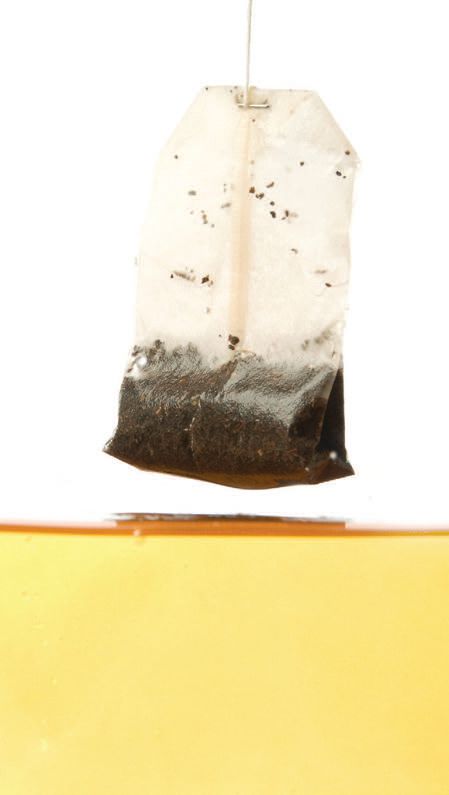Hiram Hyde’s unheralded handiwork
Evan Zabawski | TLT From the Editor April 2016
A significant milestone nearly lost to obscurity.

A kind of oil-tea, if you will.
© Can Stock Photo Inc. / Karidesign
THE TOWN OF TRURO, NOVA SCOTIA, has its place in history as the birthplace of Stanfield’s unshrinkable drop-seat long johns, popularized during the Klondike Gold Rush. Truro’s fame as the Hub of Nova Scotia is due to its location at the junction of major rail lines, highways and power transmission corridors. However, one of its residents, stagecoach operator Hiram Hyde, achieved a historical lubricant milestone that receives no recognition, even in his home town.
Hyde was born in Sandy Hill, N.Y., in 1817 and moved to Quebec City when he was 16; it was there he met shipping magnate Samuel Cunard who hailed from Nova Scotia. In 1841 Cunard made Hyde a mail coach driver on the Halifax-Pictou stage run, which ran through Truro. Normally the 104-mile (167 km) run took two days, but Hyde managed to cut it down to 17 hours. Throughout his 25-year career, Hyde revolutionized stagecoaching in Nova Scotia, a career highlighted with the honor of carrying Prince Edward in his six-horse Concord Coach during the Prince’s 1860 royal visit.
A diverse and progressive man, Hyde encouraged construction of the Nova Scotia Railway seemingly against his own self-interest, then later supplied cord wood to the railway. He was one of the founders of the Nova Scotia Electric Telegraph Co., which built the first telegraph system through Northern Nova Scotia.
Hyde also invested heavily in “paraffin oil” (kerosene), which was invented by fellow Nova Scotian Abraham Gesner in 1846 as a cheaper and clearer burning alternative to the whale oil being used as an illuminant to light the streets at night. Gesner’s process originally refined the liquid fuel from coal, bitumen and oil shale. Hyde earned a patent for his own “improved mode of and improved apparatus for manufacturing oils” from coal, but the discovery of petroleum soon made the process obsolete, as kerosene was more easily produced from petroleum.
Switching his focus to petroleum, Hyde began experimenting with coup oil. Coup oil is the designation of the first oil extracted from coal as described in Luther Atwood’s U.S. Patent No. 9,630, “Improvement in preparing lubricating oils” from March 29, 1853. Atwood’s naming was inspired by the recent coup d’état of Napoléon III (nephew and heir of Napoléon I). Atwood lost interest in this new oil extract, due to its repulsive and disagreeable odor, and decided to distill and refine “Canada pitch” from the petroleum found near Petrolia, Ontario.
Hyde was apparently undeterred by the strong odor and filed British patent 2669 on Nov. 27, 1855, titled “An improved manufacture of lubricating oils,” which described a process beginning with cold-pressing castor oil (to remove stearine), then melted, washed and dried using steam. Next, the warm castor oil is added to coup oil, and to this compound oil is added an equal part of a light hydrocarbon oil (manufactured according to his patent from three days earlier) and mixed using a jet of steam. The mixture is then allowed to cool, and lastly exposed to “sunlight or gentle heat for a week or two until it becomes clear, after which it will be fit for use.” Not a terribly productive recipe.
On this same day he also filed patent number 2668, a historic patent titled “An improved manufacture of lubricating compound.” The process being to place “7 lbs. of elastic bitumen para, or East India caoutchouc, or African-rubber” in a sieve cloth bag and placing it in a 100-gallon vat of coup oil “at any temperature varying from 80-150 F.” With the occasional agitation or application of pressure to the sieve cloth, “All the pure part of the added hydrocarbon is dissolved and combined with the oil.” The final mixture, a kind of oil-tea, if you will, is then passed through a fine wire gauze sieve and allowed to rest “until it becomes perfectly brilliant, and is then fit for use.”
Truro, it appears, also is home to the first patented oil additive.
 Evan Zabawski, CLS, is a business development/reliability specialist for ALS Tribology in Calgary, Alberta, Canada. You can reach him at evan.zabawski@alsglobal.com
Evan Zabawski, CLS, is a business development/reliability specialist for ALS Tribology in Calgary, Alberta, Canada. You can reach him at evan.zabawski@alsglobal.com.